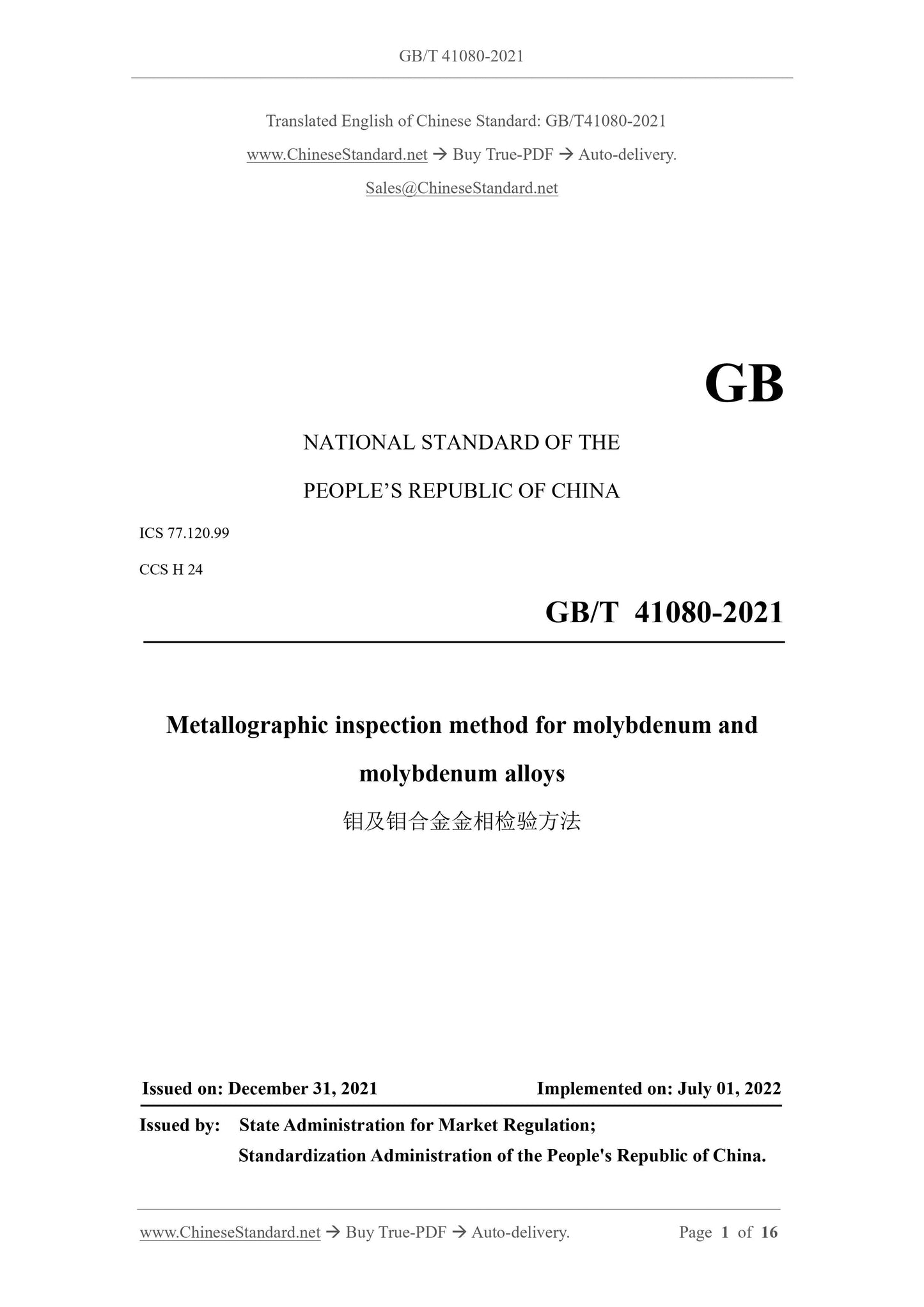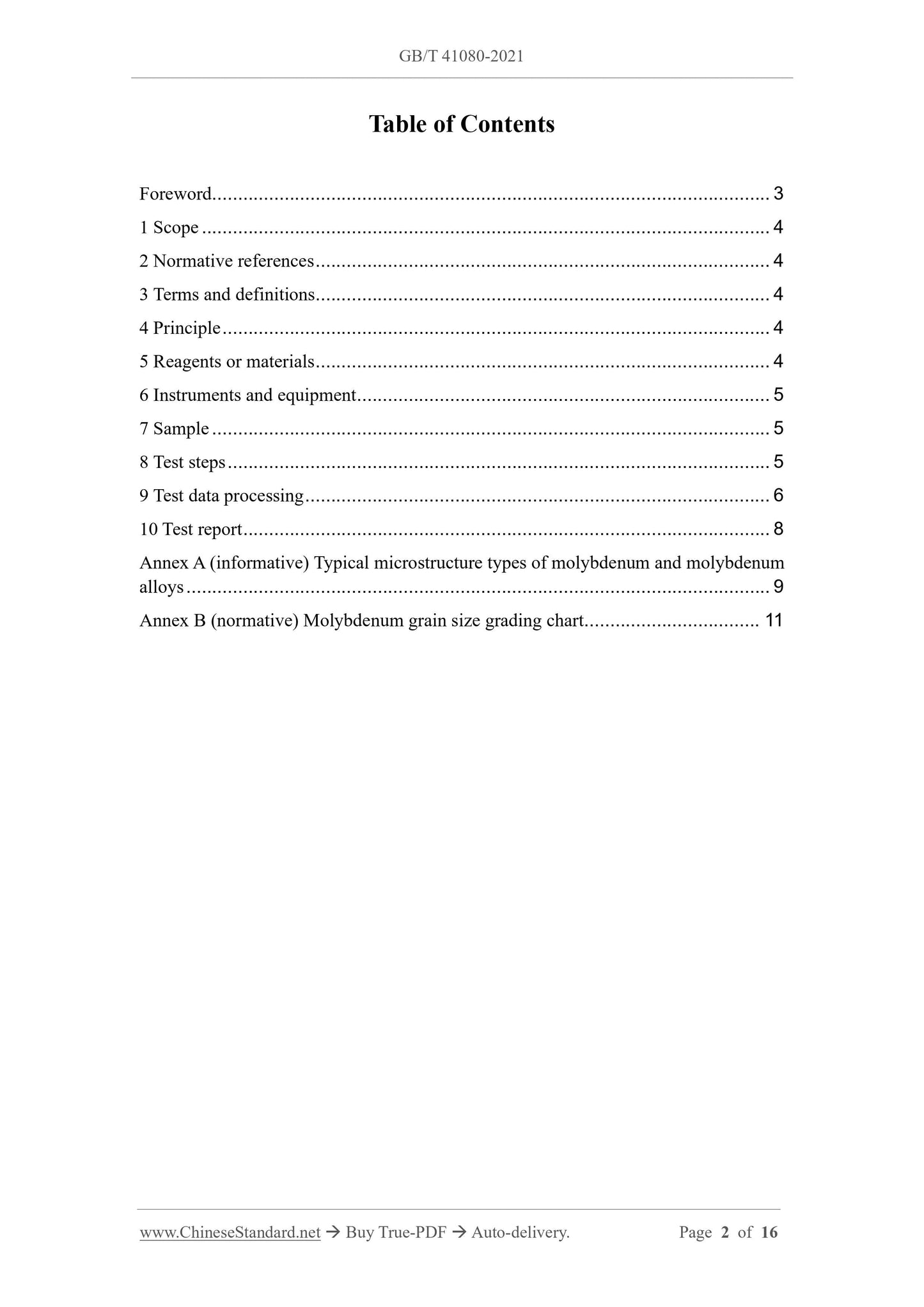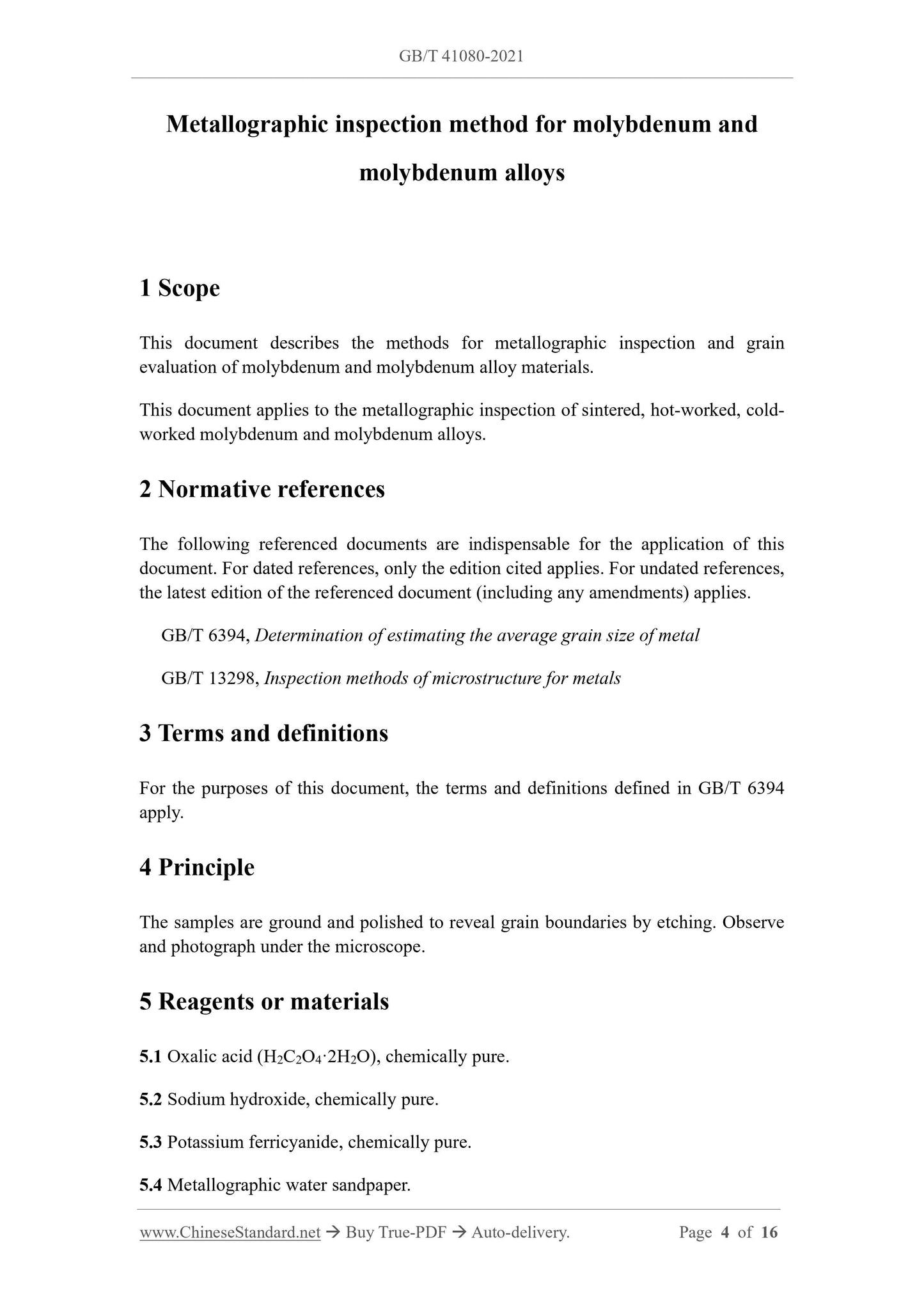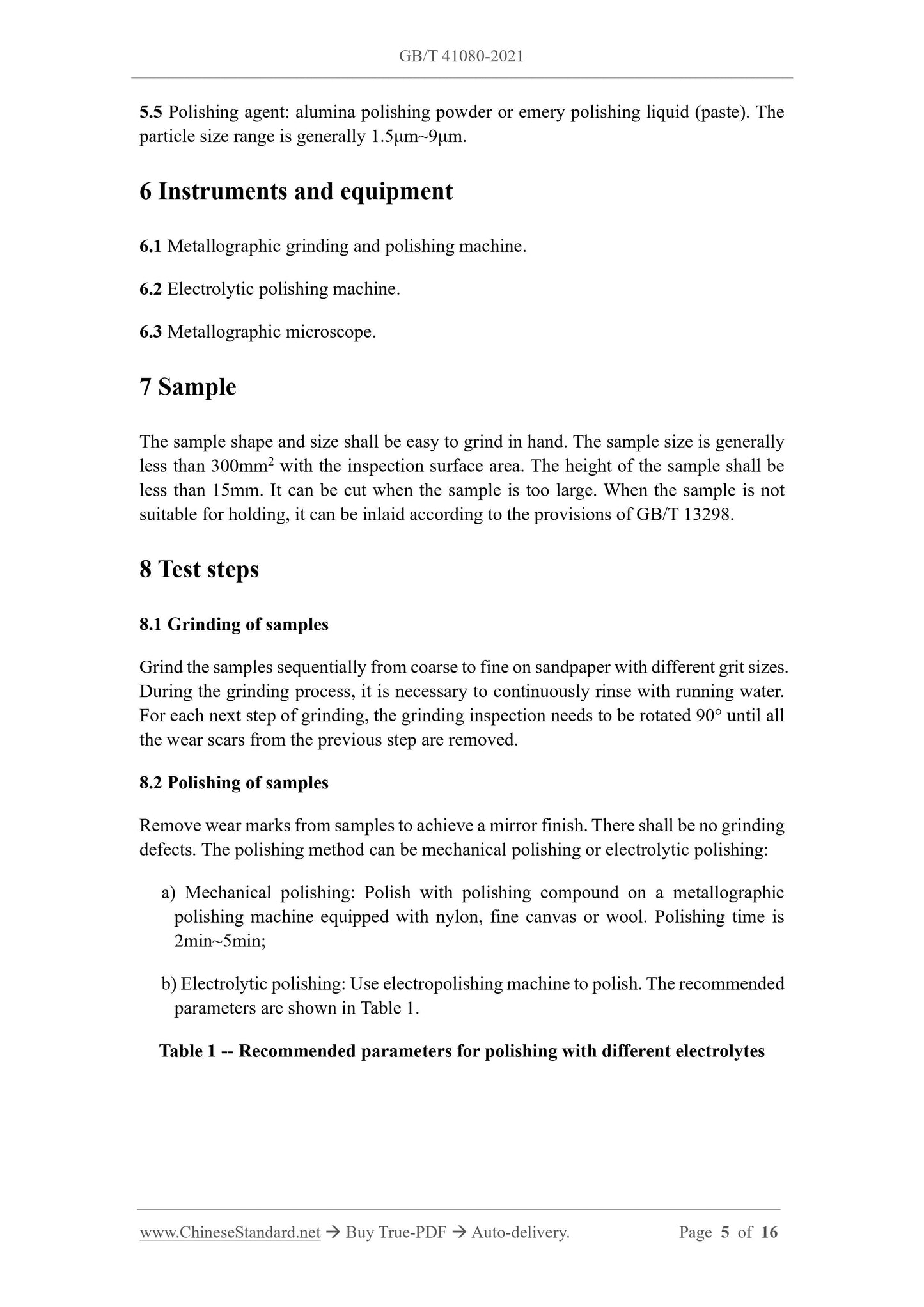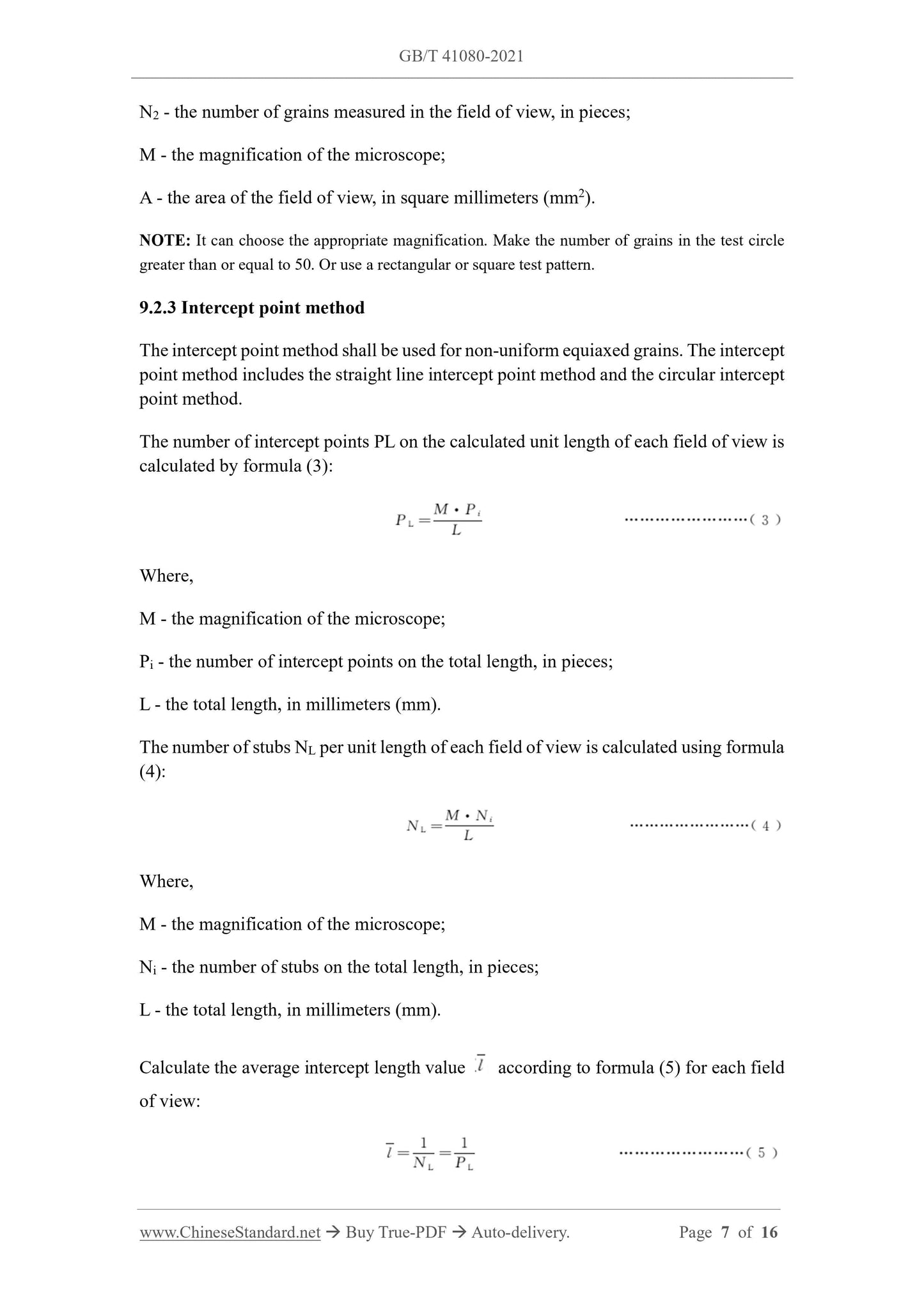1
/
of
5
www.ChineseStandard.us -- Field Test Asia Pte. Ltd.
GB/T 41080-2021 English PDF (GB/T41080-2021)
GB/T 41080-2021 English PDF (GB/T41080-2021)
Regular price
$230.00
Regular price
Sale price
$230.00
Unit price
/
per
Shipping calculated at checkout.
Couldn't load pickup availability
GB/T 41080-2021: Metallographic inspection method for molybdenum and molybdenum alloys
Delivery: 9 seconds. Download (and Email) true-PDF + Invoice.Get Quotation: Click GB/T 41080-2021 (Self-service in 1-minute)
Newer / historical versions: GB/T 41080-2021
Preview True-PDF
Scope
This document describes the methods for metallographic inspection and grainevaluation of molybdenum and molybdenum alloy materials.
This document applies to the metallographic inspection of sintered, hot-worked, cold-
worked molybdenum and molybdenum alloys.
Basic Data
| Standard ID | GB/T 41080-2021 (GB/T41080-2021) |
| Description (Translated English) | Metallographic inspection method for molybdenum and molybdenum alloys |
| Sector / Industry | National Standard (Recommended) |
| Classification of Chinese Standard | H24 |
| Word Count Estimation | 14,188 |
| Issuing agency(ies) | State Administration for Market Regulation, China National Standardization Administration |
Share
